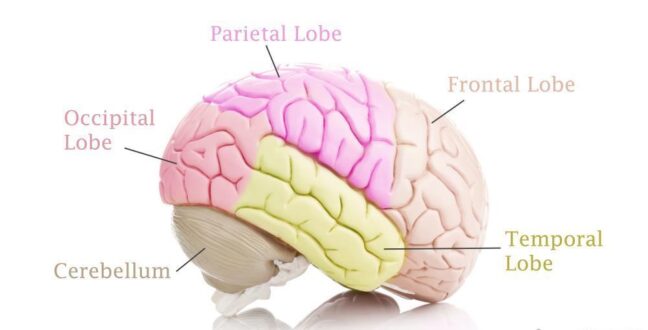The brain is the core of the central nervous system and is the most complex organ of the body. The cerebrum is the largest and thinking and reasoning part of the brain. It is also responsible for controlling the voluntary muscles of the body. Both the long-term and short-term memory is confined in the cerebrum while it is divided into two where the left half is deemed controlling the right side of the body and the right half is responsible for controlling the left side of the body.
Encephalomalacia is counted among the most serious types of brain damage that can affect individuals from various age groups. Encephalomalacia is medical terminology used for brain softening. The part of brain affected is cerebrum. Encephalomalacia can affect anyone, even a developing embryo in uterus.
There are a number of causes that can lead to the softening of the brain tissue, although the most implicated is some serious head injury that subjects the brain to tissue softening. The injury to the brain can result to the inflammation and swelling of the brain that a variation in the size of the brain from swelling can cause encephalomalacia.
Encephalomalacia in a localized area is mostly seen with hemorrhage that it is also being implicated in the cause of the condition. Degeneration and deterioration of the brain are also believed to result in extensive softening of the brain although this one is rather rare in occurrence.
Encephalomalacia is regarded as one of the most serious types of brain condition that can bring irreversible damage and affect the normal function of the body as a whole. No cure directed towards the condition of encephalomalacia has been identified and only the underlying conditions are directly applied to treatment and cure.
Encephalomalacia (softened Brain Tissue)
Encephalomalacia, also known as cerebral softening, is a very serious disorder inflicting permanent tissue damage to the patient’s brain. The disease is not limited to specific ages, genders or races. Even embryos in the womb and infants may be affected by this medical condition primarily resulting from trauma. The most prominent feature of softening of the brain, or encephalomalacia, is the alteration of consistence: but the disease results from other fundamental changes, and is treated of amongst the diseases of texture only for want of a more suitable place.
Gliosis and Encephalomalacia
Gliosis is a nonspecific reactive change of glial cells in response to damage to the central nervous system (CNS). In most cases, gliosis involves the proliferation or hypertrophy of several different types of glial cells, including astrocytes, microglia, and oligodendrocytes. In its most extreme form, the proliferation associated with gliosis leads to the formation of a glial scar. Gliosis is the growth of glial tissue (astrocytes). Encephalomalacia is typically a “hole in the brain. Technically it means softening of the brain so all stages between initial injury and the “hole” would also be encephalomalacia.
Encephalomalacia definition
Encephalomalacia is the softening or loss of brain tissue after cerebral infarction, cerebral ischemia, infection, craniocerebral trauma, or other injury. The term is usually used during gross pathologic inspection to describe blurred cortical margins and decreased consistency of brain tissue after infarction. The softening may occur in a specific part of the brain or may be more widespread. In some rare cases, deterioration or degeneration of the brain may lead to extensive softening of the substances within. It can affect different parts of the organ and damage tissues in the frontal lobe, occipital lobe, parietal lobe as well as the temporal lobe.
Occipital Lobe definition
Occipital lobe is the posterior lobe of each cerebral hemisphere, having the shape of a three-sided pyramid and containing the visual center of the brain. The occipital lobe is one of the four major lobes of the cerebral cortex in the brain of mammals. The occipital lobe is important to being able to correctly understand what your eyes are seeing. These lobes have to be very fast to process the rapid information that our eyes are sending. Similar to how the temporal lobe makes sense of auditory information, the occipital lobe makes sense of visual information so that we are able to understand it.
Parietal Lobe definition
The parietal lobe is one of the four major lobes of the cerebral cortex in the brain of mammals. The parietal lobe is positioned above the occipital lobe and behind the frontal lobe and central sulcus. The parietal lobe carries out some very specific functions. As a part of the cortex, it has a lot of responsibilities and has to be able to process sensory information within seconds. The parietal lobe is where information such as taste, temperature and touch are integrated, or processed.
Encephalomalacia Symptoms
Symptoms of encephalomalacia are varied because they depend on the area of the brain affected by the softening. However, the early signs of encephalomalacia onset are similar regardless of the area affected, and these could be;
• clumsiness and diminished coordination
• visual impairment that may be permanent or temporary
• extreme drowsiness
• severe headaches
• head-spinning sensation and vertigo
• memory loss and mood swings if the frontal lobe is affected
Encephalomalacia is also categorized according to the colors and stages of damage such as:
• Red softening
• Yellow softening
• White softening
Encephalomalacia Treatment
Encephalomalacia treatment is not guaranteed to reverse the damage nor restore the functionality of the damaged part of the brain. There has also been no clear indication if the sensations can also be restored after changes in functional mobility of the brain. Some medications as:
• Alprazolam (Xanax) is prescribed for anxious mood.
• Amitriptyline (Elavil) may be prescribed for insomnia and pain.
• Meloxicam (Mobic) and Tramadol (Ultram) may be prescribed for pain.
• Hydrotherapy (water therapy) is also given as a physical therapy.
Cystoperitoneal shunts or cyst taps are proven to be effective in managing multicystic encephalomalacia
 Health & Care Information
Health & Care Information



